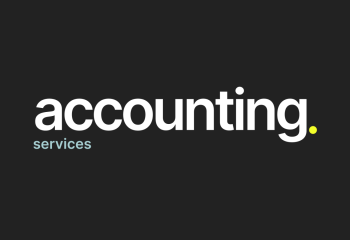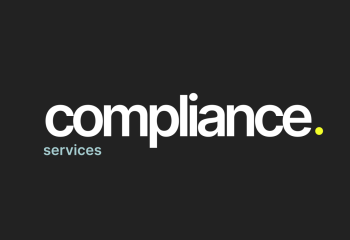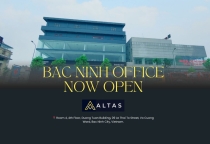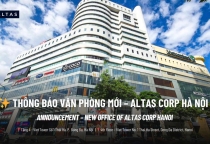The Supreme People's Court has just introduced the Draft Law on Bankruptcy (amendments) (hereinafter referred to as "Draft 2025") to amend the Bankruptcy Law 2014 No. 51/2014/QH13 (hereinafter referred to as "Bankruptcy Law 2014"). The Draft 2025 specifies the roles and responsibilities of key parties, such as judges, administrators, creditors, and debtors, and details the steps involved in initiating and managing these proceedings, including timelines and appeals. It also covers asset and liability management, debt repayment priority, and the circumstances under which proceedings can be stopped or dismissed.
ALTAS has studied the Draft 2025 (current version 1.0) to understand legal implications which will be presented below.
(1).png)
Funding Bankruptcy Costs, Recovery Costs
The proposed Draft 2025 outlines two options for funding advance recovery costs when the filer is exempt from paying these costs and in cases of simplified bankruptcy procedures.
· Option 1: The advance costs for recovery can be taken from the fees collected from business and cooperative registrations. The government would set the level of these fees, and a portion would be used to fund these advance costs.
· Option 2: The advance costs for recovery would be guaranteed by the State budget.
These two options address the situation where the entity filing for recovery or bankruptcy is unable to pay the upfront costs, ensuring that the process can still move forward. The Draft 2025 also specifies that the requirement to pay advance costs is waived for filers as defined in point b, clause 1, Article 105, and clause 2, Article 143. In addition, if the company has sufficient assets to cover bankruptcy costs, the filer is reimbursed for the advance costs they paid. However, if the company has no remaining assets, the filer is not reimbursed.
Post-Bankruptcy Prohibitions
After a court decides to initiate bankruptcy proceedings, several actions are prohibited for the involved business or cooperative. These prohibitions are designed to protect assets and ensure fair distribution to creditors. Here are some of the key activities that are forbidden after a bankruptcy filing:
· Concealing or Transferring Assets: Businesses are strictly forbidden from hiding, moving, or giving away any of their assets. This includes any action that might diminish the value of the assets or make them unavailable to creditors.
· Repaying Unsecured Debts: Paying off debts that are not backed by collateral is prohibited. This is to prevent preferential treatment of certain creditors over others. However, there are exceptions, such as paying wages to employees that were incurred after the bankruptcy filing.
· Waiving Rights to Claim Debt: The business cannot give up its right to collect money owed to it. This ensures that all potential assets are available for distribution in the bankruptcy process.
· Converting Unsecured Debt to Secured Debt: Businesses cannot change debts that were previously unsecured into secured debts using company assets. This prevents the business from favoring certain creditors and reducing the pool of assets available to other creditors.
· Profit Distribution: After a bankruptcy filing & obtainment of Decision to open rehabilitation proceedings (Article 85 of the Draft), businesses are not allowed to distribute profits or dividends. This restriction is to make sure all available funds are used to pay off debts.
These prohibitions are in place to maintain fairness and transparency during bankruptcy proceedings. Any transactions that violate these restrictions are considered invalid and may be reversed by the court. It is important for businesses to comply with these prohibitions to avoid further legal complications.
Additionally, it is important to note that after a bankruptcy filing, a business continues its operations but under the supervision of the asset manager and the creditor representative. Before engaging in certain activities, the business must report to the asset manager, including any activity related to borrowing, pledging, mortgaging, guaranteeing, selling, transferring, or leasing assets.
Newly introduced “fast-track" procedure
The proposed amendments to the 2014 Bankruptcy Law outline specific criteria for applying a simplified bankruptcy procedure, also referred to as a "fast-track" procedure. These criteria focus on the size and complexity of the business and its debts. There are two main approaches or "Options" to determining eligibility for simplified procedures:
Option 1:
· The business is classified as small or micro-sized.
· It has fewer than 20 unsecured creditors.
· Alternatively, the business can be classified as small or micro-sized with a total debt of less than 10 billion VND.
Option 2:
· The business has fewer than 10 unsecured creditors.
· It employs fewer than 200 workers.
· Alternatively, the business can be small or micro-sized and also eligible for a simplified recovery procedure.
In both Options, a business can qualify for the simplified procedure if it is considered "small or micro-sized" and meets either the creditor or total debt criteria. These criteria aim to streamline the bankruptcy process for smaller and less complex cases, making it faster and more efficient. The simplified procedure is also intended to reduce the burden and costs associated with standard bankruptcy proceedings.
There are also some specific provisions for simplified procedures:
· The time limits for procedures in the simplified process are half of the time limits for the standard bankruptcy process.
· A court-appointed asset manager may not be required unless requested by a participant in the procedure.
· The threshold for a valid creditor's meeting is lowered to more than 51% of the total debt.
· A resolution passed at the creditor's meeting needs more than 51% of total debt in favor to be adopted.
If a case initially qualifies for the simplified process, but it becomes clear that the requirements for simplified procedures are no longer being met, the case will be switched to the standard procedure.
In some special cases, when the business meets the requirements for a simplified bankruptcy, the court must decide within 15 days of accepting a bankruptcy request whether the simplified procedure applies.
And if the business meets certain conditions (stipulated in Clause 2, 3, and 4 of Article 140), the court must declare the business bankrupt within 30 days of accepting the request. If the business is declared
bankrupt under these conditions, the person who made the bankruptcy request will not have their bankruptcy fee reimbursed.
ALTAS provides Legal Services related to Bankruptcy and Corporate Restructuring
(i) Legal advice related to bankruptcy procedures such as: payment procedures, consequences, measures to handle assets, etc.;
(ii) Checking and evaluating the legality of contracts and due debts;
(iii) Representing clients in bankruptcy procedures, participating in negotiations with related parties;
(iv) Legal advice related to corporate restructuring.
Conclusion
ALTAS LAW is committed to supporting investors and businesses during this volatile period. Please contact Partner Chris Luong at chris.luong@altas.vn if you need further information or assistance.
Copyright © 2025 ALTAS LAW. All rights reserved. Ownership: This documentation and content (Content) is a proprietary resource owned exclusively by ALTAS LAW (meaning ALTAS LAW, ALTAS CORP and its member firms). Use of this Content does not of itself create a contractual relationship, nor any attorney/client relationship, between ALTAS LAW and any person. Disclaimers: The Content provided is for informational purposes only and may not reflect the latest legal or regulatory developments. Summaries of laws, regulations, and practices are subject to change. This Content does not constitute legal or professional advice for any specific situation and should not be relied upon as a substitute for reviewing and complying with applicable laws, rules, regulations, or official forms. Always seek legal counsel before making any decisions or taking any action based on this Content. ALTAS LAW, along with its editors and contributing authors, make no guarantees regarding the accuracy of the Content and explicitly disclaim any liability for any consequences resulting from actions taken, allowed, or omitted, whether fully or partially based on any part of the Content. The Content may include links to external websites, and external sites may also link to it. ALTAS LAW is not responsible for the content or functionality of any such external websites and disclaims all liability for any issues arising from their content or operation. Please note: Past results do not guarantee similar outcomes.

























![?️ [ALTAS TALK IS COMEBACK | SERIES: “TAX MATTERS 2025”] ?️ [ALTAS TALK IS COMEBACK | SERIES: “TAX MATTERS 2025”]](thumbs/210x144x1/upload/news/altas-talkintro-7705.png)



